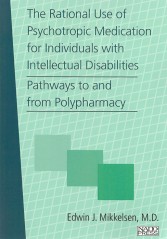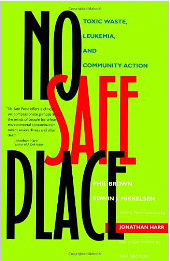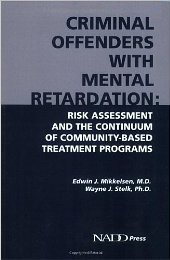 |
The Rational Use of Psychotropic Medication for Individuals with Intellectual Disabilities
Pathways to and from Polypharmacy
Mikkelsen EJ. NADD Press (National Association of Dual Diagnosis), Kingston, NY, 2007.
This book delineates empirically based strategies that will enable clinicians to effectively utilize psychotropic medication for individuals with developmental disabilities who also have psychiatric disorders. An underlying principle is that the risk profile of the proposed medication(s) should not exceed the morbidity related to the underlying psychiatric disorder. The strategies described include neutral data collection, risk-benefit analysis, and the importance of ruling out environmental and/or medical contributions to the aberrant behavior.

|
 |
No Safe Place: Toxic Waste, Leukemia and Community Action.Brown P, Mikkelsen EJ. University of California Press, Berkeley, California, 1990, reprinted second edition, 1997.
Toxic waste, contaminated water, cancer clusters–these phrases suggest deception and irresponsibility. But more significantly, they are watchwords for a growing struggle between communities, corporations, and government. In No Safe Place, sociologists, public policy professionals, and activists will learn how residents of Woburn, Massachusetts discovered a childhood leukemia cluster and eventually sued two corporate giants. Their story gives rise to questions important to any concerned citizen: What kind of government regulatory action can control pollution? Just how effective can the recent upsurge of popular participation in science and technology be? Phil Brown, a medical sociologist, and Edwin Mikkelsen, psychiatric consultant to the plaintiffs, look at the Woburn experience in light of similar cases, such as Love Canal, in order to show that toxic waste contamination reveals fundamental flaws in the corporate, governmental, and scientific spheres.
The authors strike a humane, constructive note amidst chilling odds, advocating extensive lay involvement based on the Woburn model of civic action. Finally, they propose a safe policy for toxic wastes and governmental/corporate responsibility. Woburn, the authors predict, will become a code word for environmental struggles. 
|
 |
Criminal offenders with mental retardation: Risk assessment and the continuum of community-based treatment programs.Mikkelsen EJ, Stelk WJ. NADD Press (National Association of Dual Diagnosis), Kingston, NY, 1999.
Individuals who present with the combination of developmental disabilities and a history of criminal offenses elicit a wide variety of responses from clinicians and administrators. These responses vary from overly punitive to dismissive. It is relatively easy to find examples of each extreme applied to the same type of offense in different areas. The purpose of this monograph is to present a systematic objective method of assessment that can facilitate the development of clinically appropriate individualised community treatment programs. The Appendix to this monograph contains an Annotated Bibliography of selected recently published articles on this subject.

|

